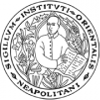Environmental and territorial modelling for planning and design
Keywords:
Pianificazione, Ambiente, Modellizzazione territoriale, GeodesignSinossi
Editore: FedOA Press (Federico II Open Access University Press)
Collana: Smart City, Urban Planning for a Sustainable Future
Pagine: 704.
Lingua: Inglese
NBN: http://nbn.depositolegale.it/urn:nbn:it:unina-24077
Abstract: Dal 5 all’8 settembre 2018 l’Università della Tuscia e il Dipartimento di Scienze Agrarie e Forestali - DAFNE hanno ospitato la decima edizione del Congresso Internazionale INPUT.
INPUT è un gruppo informale di ricercatori accademici italiani che operano in molti settori connessi all’uso dell’informatica nella pianificazione.
Questa decima edizione del Congresso ha perseguito obiettivi multipli con un carattere olistico, senza confini, per affrontare la complessità degli attuali sistemi socio-ecologici seguendo un approccio sistemico finalizzato alla risoluzione dei problemi. In particolare, la conferenza è stata orientata a presentare lo stato dell'arte degli approcci di modellazione impiegati nella pianificazione urbana e territoriale in contesti nazionali e internazionali.
Inoltre, la conferenza ha ospitato un seminario di Geodesign, di Carl Steinitz (Harvard Graduate School of Design) e Hrishi Ballal (via skype), Tess Canfield e Michele Campagna.
Infine, l'ultimo giorno della conferenza, si è svolto l’hackfest di QGIS, in cui oltre 20 sviluppatori di software open source provenienti da tutta Italia hanno discusso le ultime novità e gli aggiornamenti dalla rete QGIS.
L'acronimo “INPUT” è nato come “INformatics per Urban and Regional Planning”. Nella transizione alla grafica, involontariamente, il primo termine è stato trasformato in "Innovazione", con un bell'esempio di serendipità, in cui un piccolo errore si trasforma in qualcosa di nuovo e intrigante.
Downloads
Riferimenti bibliografici
Berto, R., Barbiero, G., Barbiero, P., & Senes, G. (2018). An individual’s connection to nature can affect perceived restorativeness of natural environments. Some observations about biophilia. Behavioral Sciences, 8, 34. doi: https://doi.org/10.3390/bs8030034
Borges, J., Zyngier, C., Lourenço, K., & Santos, J. (2014). Spatial Perception and Cognition Review. Considering Geotechnologies as Urban Planning Strategy. TeMA. Journal of Land Use, Mobility and Environment, Special Issue INPUT 2014. doi:http://dx.doi.org/10.6092/1970-9870/2538
Borri, D., & Camarda, D. (2013). Modelling space perception in urban planning: A cognitive AI-based approach. Studies in Computational Intelligence, 489, 3-9. doi: https://doi.org/10.1007/978-3-319-00651-2_1
Bottero, M., Ferretti, V., & Mondini, G. (2013). From the environmental debt to the environmental loan: trends and future challenges for intergenerational discounting. Environment, development and sustainability, 15(6), 1623-1644. doi: https://doi.org/10.1007/s10668-013-9453-1
Burov, A. (2015). Spatial Planning of the Peripheral Rural Areas in Bulgaria. The Example of the South Central Region. (Doctoral dissertation, UACEG, Sofia, Bulgaria).
Campagna, M. (2016). Metaplanning: About designing the Geodesign process. Landscape and Urban Planning, 156, 118-128. doi: https://10.1016/j.landurbplan.2015.08.019
Campagna, M., & Di Cesare, E. A. (2016). Geodesign: Lost in Regulations (and in Practice). In R. Papa and R. Fistola (Eds.), Smart Energy in the Smart City. Green Energy and Technology. Cham, CH: Springer. doi: https://doi.org/10.1007/978-3-319-31157-9_16
Cannas, I., & Ruggeri, D. (2016). The Natura 2000 Network in the context of the Metropolitan City of Cagliari: an example of Habitat Suitability Approach (part one). In G. Colombo, P. Lombardi and G. Mondini, INPUT 2016 e-agorà/e-ἀγορά for the transition toward resilient communities. Conference Proceedings Book (pp. 190-195). Turin, IT: INPUT. ISBN: 9788890529641
Carrasco, C., Palme, M., Gálvez, M., Padilla, U., Fonseca, A., & Inostroza, L. (2017). Urban Heat Island of Valparaíso, Chile-A Comparison between 2007 and 2016. IOP Conference Series on Material Science and Engineering, 245(7). doi: http://doi.org/10.1088/1757-899X/245/7/072036
Cervelli, E., Pindozzi, S., Sacchi, M., Capolupo, A., Cialdea, D., Rigillo, M., & Boccia, L. (2017). Supporting land use change assessment through Ecosystem Services and Wildlife Indexes. Land Use Policy, 65, 249-265. doi: https://doi.org/10.1016/j.landusepol.2017.04.011
Cialdea, D. (2018). Smart Land: Regeneration and Sustainability in Lost Scenarios and New Performances. In R. Papa, R. Fistola and C. Gargiulo (Eds.), Smart Planning: Sustainability and Mobility in the Age of Change (pp. 15-36). Springer International Publishing. doi: https://doi.org/10.1007/978-3-319-77682-8
Cialdea, D., & Mastronardi, L. (2014). Marginality Phenomena and New Uses on the Agricultural Land. Diachronic and Spatial Analyses of the Molise Coastal Area. TeMA. Journal of Land Use, Mobility and Environment, Special Issue INPUT 2014, 235-245. doi: http://dx.doi.org/10.6092/1970-9870/2519
Cutini, V. (2018). Rigenerare, come e dove: strumenti analitici a supporto della rigenerazione urbana. In S. Rusci (Ed.), Ri-conoscere la Rigenerazione. Strumenti giuridici e tecniche urbanistiche per la rigenerazione urbana. Rimini, IT: Maggioli Editore.
De Montis, A., Martín, B., Ortega, E., Ledda, A., & Serra, V. (2017). Landscape fragmentation in Mediterranean Europe: A comparative approach. Land Use Policy, 64, 83-94. doi: http://dx.doi.org/10.1016/j.landusepol.2017.02.028
Di Ludovico, D., & D’Ovidio, G. (2017). Transportation Network Role for Central Italy Macroregion Development in a Territorial Frames Model Based. IOP Conference Series: Materials Science and Engineering, 245(4), 042039. doi: https://doi.org/10.1088/1757-899X/245/4/042039
Fistola, R. (2013). Smart City: riflessioni sull'intelligenza urbana. TeMA. Journal of Land Use, Mobility and Environment 6 (1), 47-60. doi: http://dx.doi.org/10.6092/1970-9870/1460
Formato, E., & Russo, M. (2014). Re-Use/Re-Cycle Territories: A Retroactive Conceptualisation for East Naples. TeMA. Journal of Land Use, Mobility and Environment, Special Issue INPUT 2014. doi: http://dx.doi.org/10.6092/1970-9870/2496
Gargiulo, C., & Lombardi, C. (2016). Urban Retrofit and Resilience. The challenge of Energy Efficiency and Vulnerability. TeMA. Journal of Land Use, Mobility and Environment, 9(2), 137-162. doi:http://dx.doi.org/10.6092/1970-9870/3922
Gissi, E., Gaglio, M., & Reho, M. (2016). Sustainable energy potential from biomass through ecosystem services trade-off analysis: The case of the Province of Rovigo (Northern Italy). Ecosystem Services, 18, 1-19. doi: https://doi.org/10.1016/j.ecoser.2016.01.004
Grassini, L. (2012). Water resources management and territorial development: Technological changes in Apulia during the post-unification period. Plurimondi: An International Forum for Research and Debate on Human Settlements, 11, 89-123.
Inostroza, L. (2014). Open Spaces and Urban Ecosystem Services. Cooling Effect towards Urban Planning in South American Cities. TeMA. Journal of Land Use, Mobility and Environment, Special Issue INPUT 2014. doi: http://dx.doi.org/10.6092/1970-9870/2541
Khakee, A., Barbanente, A., Camarda, D., & Puglisi, M. (2002). With or without? Comparative study of preparing participatory scenarios using computer-aided and traditional brainstorming. Journal of Future Research, 6(4), 45-64. Retrieved from https://jfsdigital.org/articles-and-essays/2002-2/vol-6-no-4-may-2002-2/articles/with-or-without-comparative-study-of-preparing-participatory-scenarios-for-izmir-with-computer-based-and-traditional-brainstorming/
Lai, S., Leone, F. & Zoppi, C. (2017). Land cover changes and environmental protection: A study based on transition matrices concerning Sardinia (Italy). Land Use Policy, 67(1), 126-150. doi: http://dx.doi.org/10.1016/j.landusepol.2017.05.030
Las Casas, G., & Scorza, F. (2016). Sustainable planning: a methodological toolkit. In O. Gervasi, B. Murgante, S. Misra, A.M.A. Rocha, C.M. Torre, … and S. Wang (Eds.), International Conference on Computational Science and Its Applications (pp. 627-635). Cham, CH: Springer International Publishing. doi: http://doi.org/10.1007/978-3-319-42085-1_53
Leone, F., & Zoppi, C. (2016) Conflictual issues concerning land uses related to ecosystem services under the provisions of the Habitats and Birds Directives. In G. Colombo, P. Lombardi and G. Mondini, INPUT 2016 e-agorà/e-ἀγορά for the transition toward resilient communities. Conference Proceedings Book (pp. 177-183). Turin, IT: INPUT. ISBN: 9788890529641
Limonta, G., & Paris, M. (2017). OSM come strumento di monitoraggio dei sistemi commerciali urbani. GEAM. Geoingegneria Ambientale E Mineraria, 54(2), 103-108. Retrieved from https://re.public.polimi.it/retrieve/handle/11311/1037433/240615/Limonta%26Paris_OSM%20come%20strumento%20di%20monitoraggio_GEAM_2017.pdf
Mazzeo, G. (2009). Dall’area metropolitana allo sprawl urbano: la disarticolazione del territorio. Tema, Trimestrale del Laboratorio Territorio Mobilità e Ambiente – TeMALab, 2(4), 7-20. doi:http://dx.doi.org/10.6092/1970-9870/5021
Mazzeo, G. (2013). City and energy infrastructures between economic processes and urban planning. TeMA, Journal of Land Use, Mobility and Environment, 6(3), 311-324. doi:http://dx.doi.org/10.6092/1970-9870/1929
Moura, A. C. M. (2012). Learning topics in urban planning at UFMG: geoprocessing to support analysis, planning and proposal of the urban landscape at neighborhood scale. Paranoà, 5th URBENVIRON - International Seminar on Environmental Planning and Management, Brasília, 51-59. doi: http://dx.doi.org/10.18830/issn.1679-0944.n7.2012.12313
Papa, R., Galderisi, A., Majello, M. C. V., & Saretta, E. (2015). European Cities Dealing with Climate Issues: Ideas and Tools for Better Framing Current Practices. TeMA. Journal of Land Use, Mobility and Environment, Special Issue ECCA 2015, 63-80. doi: http://dx.doi.org/10.6092/1970-9870/3658
Papa, R., Gargiulo, C., Cristiano, M., Di Francesco, I., & Tulisi, A. (2015). Less smart more city. TeMA. Journal of Land Use, Mobility and Environment,.8 (2), 157-182. doi: http://dx.doi.org/10.6092/1970-9870/3012
Papa, R., Gargiulo, C., & Galderisi, A. (2013). Towards an urban planners’ perspective on smart city. TeMA. Journal of Land Use, Mobility and Environment. 1 (2013) 5-17, doi: http://dx.doi.org/10.6092/1970-9870/1536
Papa, R., Gargiulo, C., & Zucaro, F. (2014). Climate Change and Energy Sustainability. Which Innovations in European Strategies and Plans. Tema. Journal of Land Use, Mobility and Environment, 0. doi:http://dx.doi.org/10.6092/1970-9870/2554
Pelorosso, R., Gobattoni, F., Ripa, M., & Leone, A. (2018). Second law of thermodynamics and urban green infrastructure - A knowledge synthesis to address spatial planning strategies. TeMA. Journal of Land Use, Mobility and Environment, 11(1), 27-50. doi: http://dx.doi.org/10.6092/1970-9870/5326
Pinto, F. (2014). Urban Planning and Climate Change: Adaptation and Mitigation Strategies. TeMA. Journal of Land Use, Mobility and Environment, Special Issue INPUT 2014. doi: http://dx.doi.org/10.6092/1970-9870/2547
Piras, F., Sottile, E., & Meloni, I. (2018). Modal Share Change following Implementation of Travel Demand Management Strategies. Transportation Research Record, 0361198118773195.
Pirlone, F. (2009). I rischi naturali nelle prassi ordinarie di pianificazione e gestione urbanistica: l'importanza della temporalità nella sicurezza del territorio. Florence, IT: Alinea Editrice. ISBN: 9788860554819
Rossetti, S., Tiboni, M., Vetturi, D., & Calderòn, E. J. (2015). Pedestrian mobility and accessibility planning: some remarks towards the implementation of travel time maps. CSE-City Safety Energy, (1), 67-78. doi: http://dx.doi.org/10.12896/cse2015001004
Salata, K., & Yiannakou, A. (2016). Green Infrastructure and climate change adaptation. Tema. Journal of Land Use, Mobility and Environment, 9(1), 7-24. doi: http://dx.doi.org/10.6092/1970-9870/3723
Sepe, M. (2015). Improving sustainable enhancement of cultural heritage: smart placemaking for experiential paths in Pompeii. International Journal of Sustainable Development and Planning, 10(5), 713-733. doi: https://doi.org/10.2495/SDP-V10-N5-713-733
Severini, M., Baumgärtner, J., & Ricci, M. (1990). Theory and practice of parameter estimation of distributed delay models for insect and plant phenologies. Meteorology and environmental sciences, 676-719.
Talu, V. (2013). Qualità della Vita Urbana e Approccio delle Capacità. Arch. studi urb. reg., 107, 52-73. doi: https://doi.org/10.3280/ASUR2013-107004
Tiboni, M. & Rossetti, S. (2014). Achieving People Friendly Accessibility. Key Concepts and a case Study Overview. TeMA Journal of Land Use, Mobility and Environment, Special Issue INPUT 2014, 941-951. doi: http://dx.doi.org/10.6092/1970-9870/2487
Tira, M., Tiboni, M., Rossetti, S. & De Robertis, M. (2018). “Smart” Planning to Enhance Nonmotorised and Safe Mobility in Today’s Cities. In R. Papa, R. Fistola and C. Gargiulo (Eds.), Smart Planning: Sustainability and Mobility in the Age of Change. Green Energy and Technology (pp. 201-213). Cham, CH: Springer. doi: https://doi.org/10.1007/978-3-319-77682-8_12
Voghera, A. (2016). Approaches, Tools, Methods and Experiences for Territorial and Landscape Design. In R. Ingaramo and A. Voghera (Eds.), Topics and Methods for Urban and Landscape Design. From the river to the project. Cham, CH: Springer.
Zyngier, C., Pensa, P. and Masala, e. (2014). Considerations on the Use of Visual Tools in Planning Processes: A Brazilian Experience. TeMA Journal of Land Use Mobility and Environment, Special Issue INPUT 2014, 989-998. doi: http://dx.doi.org/10.6092/1970-9870/2531
















